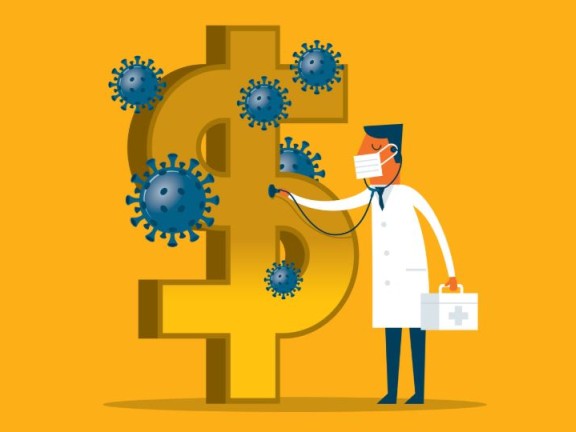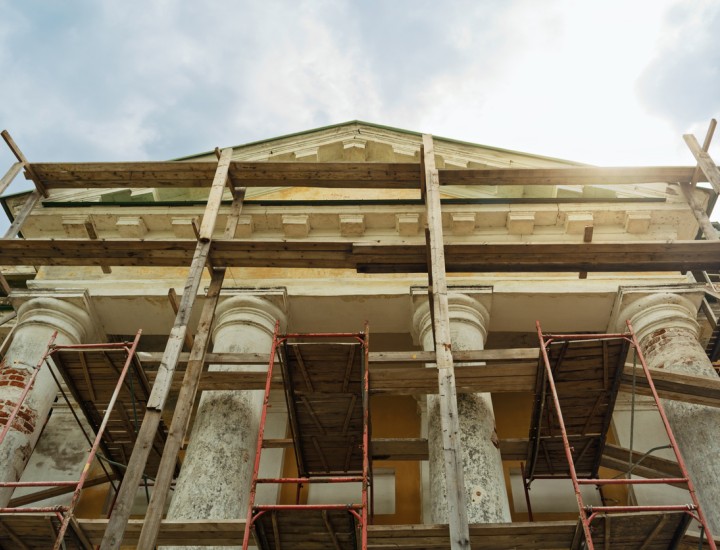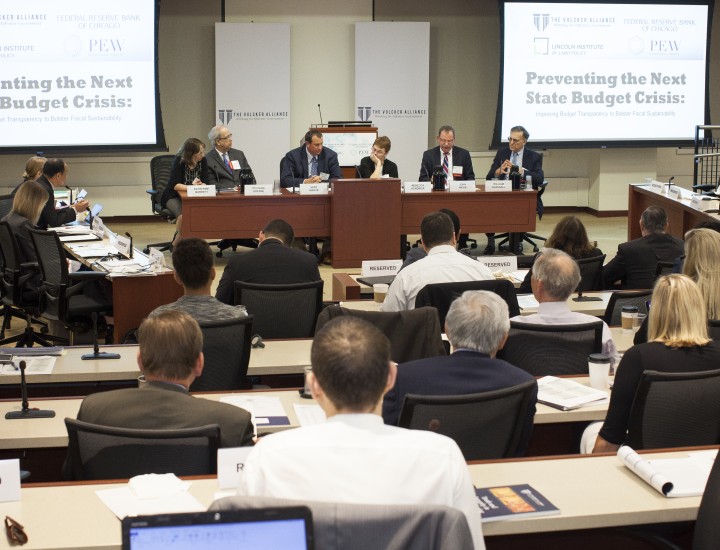How Coronavirus is Exposing States' Fiscal Risks

[This article was originally published in The Bond Buyer on March 12, 2020.]
A New Yorker climbed into a yellow taxi on Manhattan’s Park Avenue the other day and asked the driver how his fares were holding up as the global coronavirus pandemic continued to spread. “It’s dead,” he said. “No tourists. No businesspeople. Nothing.”
The cabbie’s lament is being echoed across America as business and leisure travelers stay at home rather than risk infection, events small and large are cancelled, and business slows so sharply that the longest U.S. economic expansion since the 1850s may finally hit the wall. The coronavirus-linked slowdown—coupled with a related crude-oil price war begun by Saudi Arabia—threatens not only the economy, but also the stability of state budgets. While Truth and Integrity in State Budgeting: The Balancing Act, the latest edition of our annual surveys, showed the most improvement in state budgets since 2017, this is the year that may bring the winning streak to an end.
While an economic and fiscal reversal depends on many unknowns, including the severity of the epidemic and the speed and magnitude of federal assistance to states, municipalities, corporations, and individuals, it is clear that states that used the nearly 11-year-long recovery to build rainy day funds and other cash reserves may withstand the fiscal impact of coronavirus better than those that failed to stash away cash when times were flush.
While states have deposited a near-record $69.6 billion in rainy day funds, according to the National Association of State Budget Officers (NASBO), that is only enough to cover a median of eight days of general fund expenditures. Indeed, several states have little to no cash reserves for emergencies and have received C or D Volcker Alliance reserve fund grades as a result. Investors who have pushed most municipal debt prices to record highs, and yields to record lows along with U.S. Treasuries, should consider this fiscal risk factor with care when making bond selections.
In addition to increased spending on public health (which may or may not be covered by federal funding), let’s look first at two emerging stressors for states:
International, domestic, and local travel is drying up rapidly. Goldman Sachs Group Inc. estimates global air traffic will fall 7% this year, a sharper decline than the industry saw from 9/11, the SARS epidemic, or the 2009-2009 during the Great Recession. President Trump’s ban on travelers from most European countries may increase the drop.
Amtrak, meanwhile, is reducing its Acela rail service between New York and Washington, D.C., and judging from the sudden appearance of empty spaces at a usually jammed New Jersey Transit suburban parking lot, local commuter trains are taking a hit as well. These cutbacks will lead to shrinking state and local sales and hotel occupancy tax revenue, reduce mass-transit fare collections and highway tolls, weigh on airport terminal lease payments, and potentially threaten the 14.3 million U.S. travel and tourism industry jobs tallied by the World Travel & Tourism Council—along with the federal, state, and local taxes industry that workers pay.
The National Basketball Association’s suspension of its current season alone will cost Chicago and Cook County about $228,000 in city and country amusement taxes for every home game at the United Center that the Bulls have to miss, according to Crain’s Chicago Business.
It is little wonder that even amid the bond market’s record-shattering rally of recent weeks, prices of high-yield muni debt, including bonds financing aircraft-maintenance and terminal facilities, have fallen as much as 4% since late February, according to the S&P High Yield Municipal Bond Index. Several fiscal officials also worry that state and city internet sales tax revenues may also be impacted by disruptions in supply chains linking China and the U.S. if online vendors cannot obtain furniture, electronics, clothing, and other items.
The rapid collapse of world crude prices from above $60 a barrel to little more than $30—triggered by a price war led by Saudi Arabia after Chinese import demand cratered and the Organization of Petroleum Exporting Countries, Russia, and the Saudis failed to cut a deal to slash output—may bring some relief to motorists, truckers, and airlines. But it will wreak fiscal havoc in oil-producing states if coronavirus continues to plague economies for a sustained period. Alaska, where oil output has been dwindling since its 1988 peak, built its 2021 budget on a “conservative” estimate of $59 per barrel for crude. At that level, petroleum production was forecast to bring in $2 billion in revenue for the year, a figure that now will be trimmed by half.
In Texas, meanwhile, Dale Craymer, president of the Texas Taxpayers and Research Association, estimates that the state loses $85 million annually for every $1 decrease in oil prices, according to The Texas Tribune. And Pennsylvania, one of the major beneficiaries of the fracking boom, assumed an oil price of $57 in its proposed 2021 budget.
When the Volcker Alliance evaluated all 50 states on their reserve fund policies for fiscal 2017-19, Alaska and Texas received average A grades for the period, reflecting both their desire to salt away a good measure of their petroleum revenues and the imposition of strict rules governing reserve withdrawals and replenishments. As of last year, NASBO estimated that Alaska had about 53% of general fund expenditures in reserves (although that was 41% of 2016’s sum), while Texas’s rainy day fund could cover 12.9% of general fund spending. By contrast, Pennsylvania, which received an average C, had a meager 1% in reserves, and Illinois, which was graded D on a scale of A to D-minus, had only $4 million on hand, enough to cover barely a few minutes of budget spending.
New York State won an average B reserve funds grade for 2017-19, more for the rules covering rainy day fund deposits and withdrawals than for the balances on hand. NASBO last year estimated the state had only 3.2% of general fund expenditures in its rainy day fund, less than half the median state’s total.
The taxi drivers on Park Avenue are feeling the economic impact of coronavirus at the street level. How well states are able to adjust their budgets to new realities will depend in no small measure on how big a fiscal cushion policy makers have provided.


